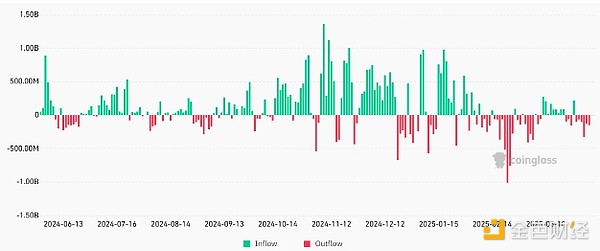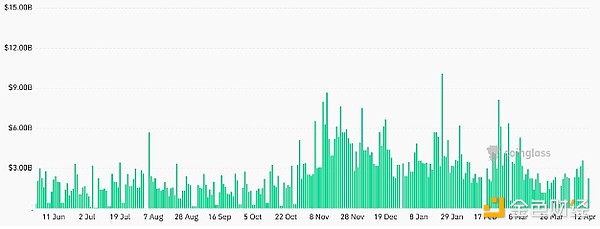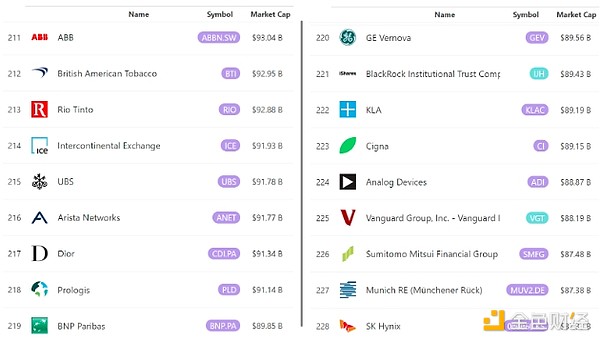Author: Marcel Pechman, CoinTelegraph; Compiler: Deng Tong, Golden Finance
Between April 3 and April 10, spot Bitcoin ETFs saw a total net outflow of $872 million, raising concerns among traders as to whether overall interest in Bitcoin is fading. Strong selling pressure began on April 3, as global trade tensions intensified and fears of a recession grew. This trend is particularly worrying after both April 11 and April 14 saw net outflows of less than $2 million from spot Bitcoin ETFs.

Total net inflows of spot Bitcoin ETFs (USD). Source: CoinGlass
Over the past five weeks, Bitcoin prices have remained relatively stable around $83,000, further indicating weak interest from both buyers and sellers. On the one hand, this lack of volatility could indicate that Bitcoin is becoming a more mature asset class. For example, several S&P 500 companies have seen their share prices fall 40% or more from their all-time highs, while Bitcoin’s maximum drop in 2025 is a healthy 32%.
However, Bitcoin’s performance has disappointed those who believe in the “digital gold” narrative. Gold prices have risen 23% so far in 2025 and hit an all-time high of $3,245 on April 11. Although Bitcoin has outperformed the S&P 500 by 4% over the past 30 days, some investors are concerned that its appeal is waning as it currently lacks correlation with other assets and cannot serve as a reliable store of value.
Bitcoin ETFs Average Daily Volume Exceeds $2 Billion
Looking at the spot Bitcoin ETF market — especially compared to gold — Bitcoin has some advantages. On April 14, the total trading volume of spot Bitcoin ETFs was $2.24 billion, 18% lower than the 30-day average of $2.75 billion. Therefore, it is not accurate to say that investors' interest in these products has disappeared.

Spot Bitcoin ETF daily trading volume (US dollars). Source: CoinGlass
While Bitcoin ETF trading volume is lower than the $54 billion daily trading volume of the SPDR S&P 500 Index ETF (SPY), it is not far behind the $5.3 billion trading volume of gold ETFs and exceeds the $2.1 billion trading volume of U.S. Treasury ETFs. This is impressive considering that the US spot Bitcoin ETF was only launched in January 2024, while the gold ETF has been trading for more than 20 years and has $137 billion in assets under management. Even if you include the Grayscale GBTC Trust, which traded more than 200,000 shares per day before converting to an ETF in 2017, Bitcoin investment products are less than eight years old. Currently, the spot Bitcoin ETF has about $94.6 billion in assets under management, exceeding the market value of well-known companies such as British American Tobacco, UBS, Intercontinental Exchange, BNP Paribas, Cigna Group, and Sumitomo Mitsui.

Tradable assets by market capitalization, USD: Source: 8marketcap
To understand the solid position of spot Bitcoin ETFs in the industry, you can look at the major holders of these products. These include well-known companies such as Brevan Howard, D.E. Shaw, Apollo Management Company, Mubadala Investment Company and Wisconsin Investment Company. From pension funds to some of the world's largest independent asset managers, Bitcoin ETFs provide an alternative to traditional assets regardless of short-term price trends.
As the asset class grows and more products such as futures and options are listed, Bitcoin may eventually be included in global indices, both in the commodity and currency categories. This may attract passive funds to invest, thereby boosting price potential and trading volume. Therefore, the current lack of strong net inflows or outflows is not unusual and should not be viewed as a sign of weakness.
 Anais
Anais







